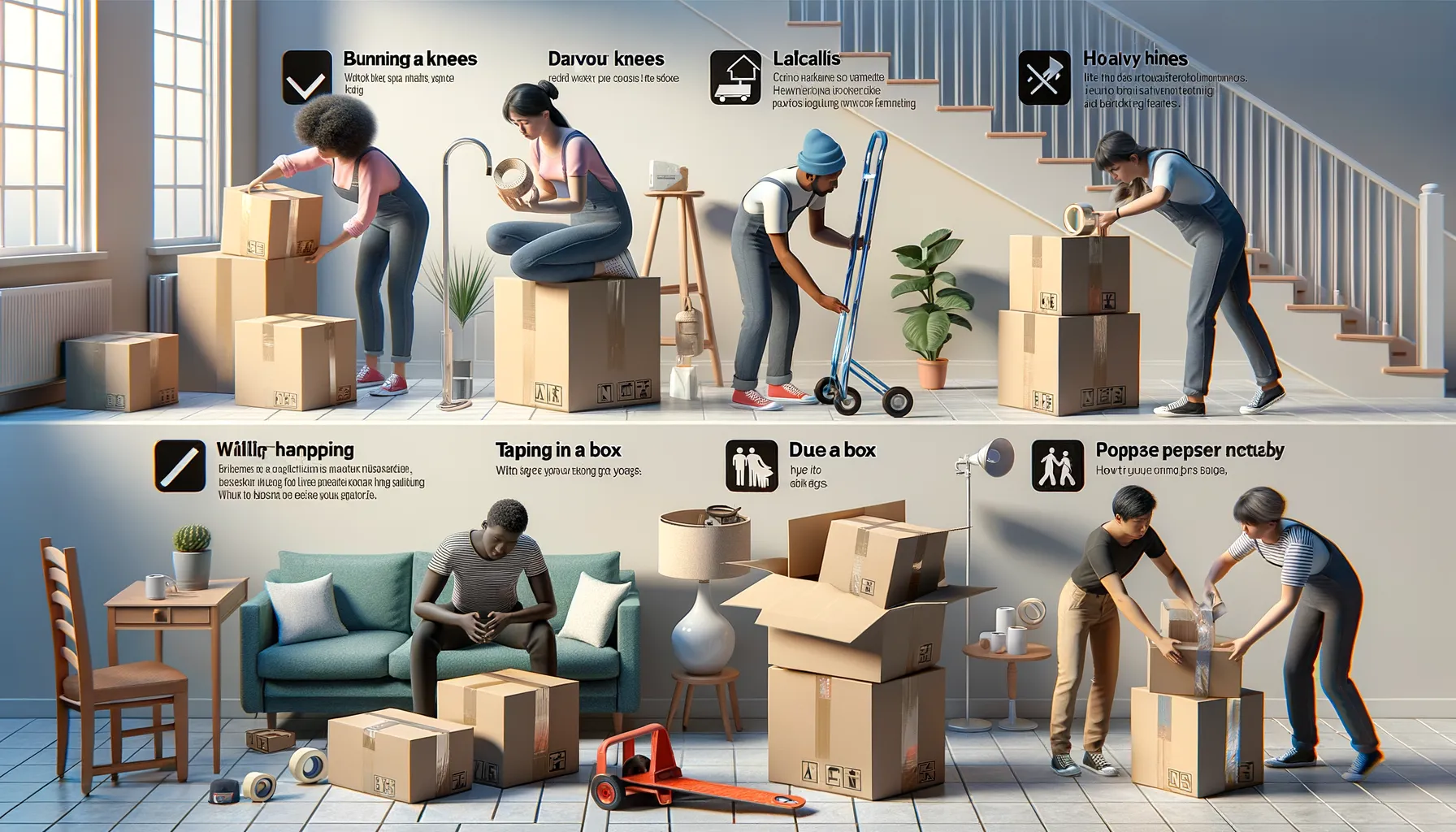Preparing for Your Move: Early Steps
Start Early for a Stress-Free Transition
Moving is more than just packing boxes; it’s the start of an exciting new chapter. To avoid feeling like you’re swimming upstream, begin the process early and break it down into manageable steps. Picture this: every small action taken today saves you from last-minute chaos tomorrow.
The first step? Grab a notebook or open your favorite app—this will be your moving master plan. Write down key dates, like when leases end or when movers arrive, and make a checklist that feels less “task-listy” and more like a roadmap for success.
Next, take a slow tour around your home. Identify what you truly love versus what needs to find a new home. No need to lug around items collecting dust! Start by:
- Donating clothes that don’t spark joy or fit anymore.
- Sorting through piles of paperwork (hello, recycling bin!).
- Selling bulky furniture that won’t suit your new space.
Find Your Dream Team
No one moves alone—it might take a village or just a few trusted allies. Start researching options for professional movers or rental trucks early. Look up reviews, compare quotes, and check availability because hot moving dates book faster than tickets to a concert. If friends or family are helping, lock them in with plenty of notice (and promise pizza!).
Momentum builds fast, so stay flexible but deliberate. Trust me, your future self will thank you.
Essential Packing Tips for a Smooth Move

Get Smart with Packing Materials
Packing isn’t just tossing your life into boxes—it’s an art! Start by gathering what you need: sturdy boxes (no one wants their precious mugs falling out mid-move), bubble wrap, packing tape, markers, and labels. But don’t overdo it on fancy supplies. Your old towels? They make excellent padding for fragile items. Those colorful grocery bags? Perfect for bundling small things like cords or kitchen utensils.
And here’s a game-changer: instead of buying extra boxes, ask local stores for free ones. Many places are happy to hand over their unused cardboard gold. The goal here is efficiency *without* breaking the bank.
- Label everything: Write on the sides of boxes, not just the top, so you can see what’s inside even if they’re stacked.
- Keep essentials accessible: Pack a “first-night kit” with toiletries, chargers, snacks, and a change of clothes—trust me, you’ll thank yourself later.
Packing Room by Room = Less Chaos
Jumping from the bedroom to the kitchen to that mysterious junk drawer? Big mistake. Stick to one room at a time. Start with rarely used spaces like the guest room or those holiday decorations in storage. Save daily essentials for last.
Oh, and don’t forget to declutter as you go—moving is the perfect chance to say goodbye to those jeans you haven’t worn in five years or that broken toaster you swore you’d fix. Call it tough love, but letting go feels oddly empowering.
Organizing Moving Day Logistics

Mastering the Chaos of Moving Day
Moving day is like a perfectly orchestrated symphony—except you’re the conductor, and half your orchestra is packed in boxes. To keep the chaos from turning into cacophony, start with a detailed plan.
Here’s a pro tip: Map out timelines. When should the movers arrive? What time do you need to return the keys? Write it all down. Trust me, your future self will thank you. Don’t forget to confirm everything with your moving company at least 24 hours before.
- Pack an “essentials” box with items like phone chargers, snacks, toiletries, and a change of clothes.
- Label your boxes not only by room but include a short description (“Kitchen—Pots & Pans”). It’s a lifesaver.
- If you have pets or kids, designate a caretaker for them during the move—it’s one less thing on your plate.
Small Details, Big Impact
Think about the little things that can cause big headaches. Are utilities set up for your new place? Have you prepped parking spaces for the moving truck? Even something as simple as keeping water bottles handy for movers (and yourself!) can make a huge difference.
And don’t forget, moving day is exhausting. But with some foresight and those small personal touches, it can also feel like an adventure. Ready to conquer it? Let’s go!
Settling into Your New Home Effectively

Creating Comfort in Your New Space
The moving truck is gone, the boxes are stacked, and here you are—standing in your new home. Exciting, isn’t it? But let’s face it, the real magic begins now: turning this unfamiliar space into a sanctuary that feels like *you*. The first step? Make one room your retreat. Whether it’s the bedroom or living room, focus on unpacking and decorating it first. Trust me, having one cozy, finished spot to unwind will feel like a hug after all that chaos.
Don’t forget the little things that make a house feel alive! Hang up family photos, throw that beloved quilt over the couch, or light your favorite candle. Those personal touches are worth their weight in gold when it comes to battling the “new house blues.”
Settle Smarter, Not Harder
Here’s a quick checklist to ease your transition:
- Update your address for utilities, banks, and subscriptions right away—no surprises later!
- Introduce yourself to neighbors with a small hello or even cookies; building community starts now.
- Explore your surroundings—find the closest grocery store, coffee shop, and park to anchor yourself to your new neighborhood.
Remember, settling into your new home is about more than unpacking—it’s about planting roots, one thoughtful detail and connection at a time.
Common Moving Mistakes and How to Avoid Them

Underestimating Your Moving Timeline
Are you a fan of “I’ll do it tomorrow”? When moving, procrastination is your worst enemy. It’s easy to look at your closets and think, “It’s not *that* much stuff!”—until you’re knee-deep in boxes the night before moving day. Many people underestimate the time it takes to sort, pack, and organize everything.
To avoid this mistake, set up a realistic timeline. Break tasks into small, manageable chunks. For example:
- 6 weeks before: Declutter and donate unused items.
- 4 weeks before: Start packing non-essentials like books and décor.
- The week of: Pack essentials and label boxes clearly.
Trust me; future you will thank past you for this prep work!
Overlooking Box Organization
Here’s the scene: You’re in your new place, craving coffee, but can’t find the box with your mugs. Sound familiar? One of the biggest culprits for chaos post-move is poor box labeling or random packing. Tossing items into a box without thought? Big mistake.
Instead, take a little extra time to both categorize and label. Write not just what’s in the box (e.g., “Kitchen – Plates”), but also what room it’s destined for. Better yet, number your boxes and keep a master list. That way, if you’re searching for something specific—like your lucky spatula—you’ll know exactly where to look!
